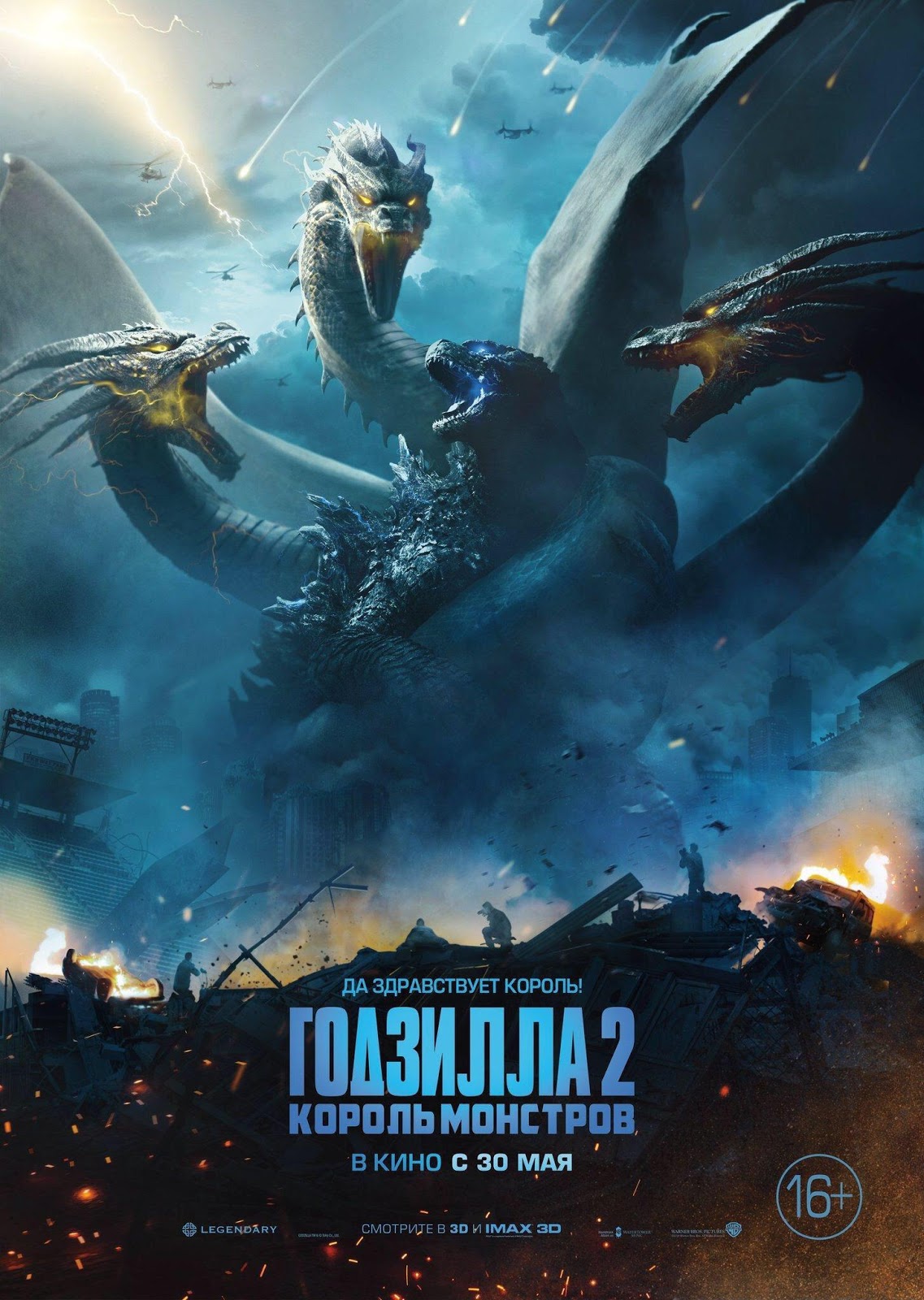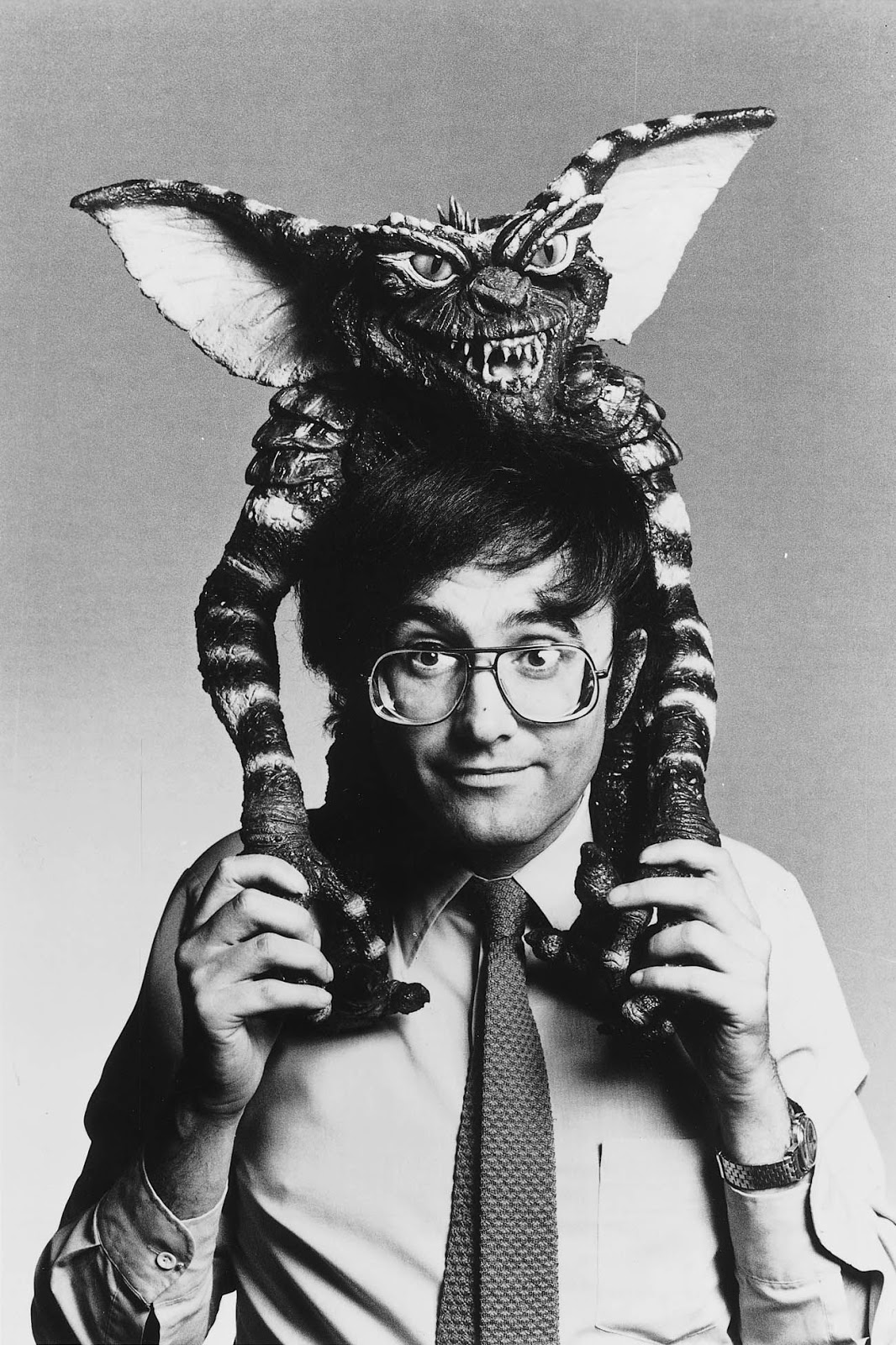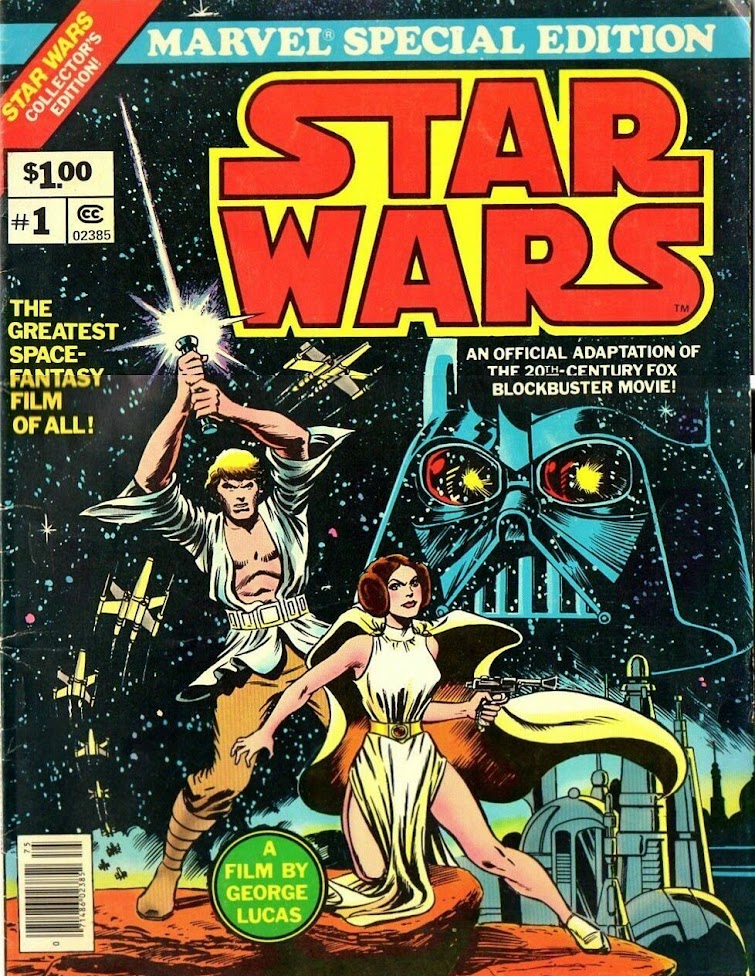Spoiler-Free Movie Review: GODZILLA: KING OF THE MONSTERS or Do we need an American Godzilla?
 |
| If anything, the new film will have given us amazing posters; case in point, this stunning Russian poster for GODZILLA: KING OF THE MONSTERS. |
I've always had a fondness for GODZILLA
and his rubber-suited pals. The very first film I remember seeing on the
big screen was at the age of 6, in my school's gymnasium on a
Saturday night. Surrounded by my friends, I stared in awe as a
gigantic Frankenstein's creature battled another gargantuan monster
named Baragon, in the midst of a fiery inferno as a forest burned
down around them.
The intricate miniatures, the grotesque
make-up, the menacing yet somewhat endearing monster, the bombastic
music, the wildly imaginative story-line...THIS, I thought, was the
very essence of cinema. Make-believe by Excellence.
The movie was 1965's FRANKENSTEIN CONQUERS THE WORLD by Ishiro Honda released by Toho Studios.
Eleven years prior, director Honda had unleashed upon the
unsuspecting world the infamous radioactive beast whose name became synonymous
with the sound of lucre in Toho's box-office over the following 65
years; GODZILLA.
Godzilla was dreamt up in spring of 1954 by producer
Tomoyuki Tanaka during a stressful flight from Jakarta where his
latest war movie project had been shut down. Tanaka needed a
blockbuster, and fast. Luckily, the inspirations for potential
blockbusters were many; Willis O'Brien's KING KONG (1933)_ had just enjoyed a
very successful re-release in 1952, and Eugene Lourie's
BEAST FROM 20000 FATHOMS had been a huge success the following year,
telling the tale of a dinosaur woken up from hibernation by an atomic
test. This last concept felt particularly relevant to a Japanese
audience, where the scars from the two atomic bombs that fell in
1945 on Hiroshima and Nagasaki were still deep. Around the same time
Tanaka was on that flight, Japan was still reeling from the news about
a Japanese fishing boat, the Daigo Fukuryu Maru (which ironically
translates to ''Lucky Dragon number 5'') which had gotten too close
to the Bikini Atoll atomic tests zone, which resulted in the crew
contracting radiation poisoning. Even more troubling; some of its
fish had made it to the market. Some headline would label the
incident ''The second atomic bombing of Japan''.
 |
| Officials inspecting the radiation levels in fish brought to the market by the Lucky Dragon Number 5. |
The resulting film, GOJIRA, directed
masterfully by Ishiro Honda, was a haunting and unrelenting drama about
the devastation that results from toying with the atom. It was a
resounding success that managed to travel abroad and start an actual
franchise, where the atomic monster soon started duking it out with
other giant creatures, and eventually became a friendly protagonist
protecting the Earth from aliens and gigantic foes in a series that
produced 32 films in Japan.
Ever since the original film was
released in the States in 1956 as GODZILLA KING OF THE MONSTERS
(Re-edited to include new scenes with Raymond Burr as an American
reporter in Japan), America has wanted to own a piece of the action.
Not content of only translating the Japanese films or making their own
giant monster films (more often than not featuring oversized bugs),
the possibility of an American version of Godzilla has been floating
around for a long time.
Already in 1959, American International
Pictures wanted to rehash footage from the first two Godzilla
movies, and shoot new ones (The suits for Godzilla and Angilas, from
GODZILLA RAIDS AGAIN, had even been crated up and sent to Hollywood)
for a film that would have been called THE VOLCANO MONSTERS.
Thankfully, the film which would have transformed our two imposing kaijus into
vulgar dinosaurs was never made.
More substantial was a project started
in 1983, heralded by FRIDAY THE 13TH PART 3 director Steve Miner, which
would have been called GODZILLA KING OF THE MONSTERS 3D. With a
script by Fred Dekker (NIGHT OF THE CREEPS, THE MONSTER SQUAD, THE PREDATOR), designs by artist William Stout and effects by Rick Baker
(THE THING).
The project was ambitious, but these following comments from artist Stout are a bit cringe worthy; “Rarely have remakes captured, much less exceed, the quality of the first film. What Steve Miner was doing was so much smarter. He was taking a film that was beloved, but it was really defective when you consider how primitive the special effects were, and trying to remake that. Remake a film with a great idea, a great concept, take Godzilla, and the public’s expectations of Godzilla, and surpass them.” The attitude is an all-too-familiar one, which denigrates the original work in favor of the fancier new approach.
 |
| Concept artist William Stout comparing his own version of Godzilla with Toho's version. |
 |
| One of the gorgeous storyboards by William Stout for GODZILLA: KING OF THE MONSTERS 3D. |
The project was ambitious, but these following comments from artist Stout are a bit cringe worthy; “Rarely have remakes captured, much less exceed, the quality of the first film. What Steve Miner was doing was so much smarter. He was taking a film that was beloved, but it was really defective when you consider how primitive the special effects were, and trying to remake that. Remake a film with a great idea, a great concept, take Godzilla, and the public’s expectations of Godzilla, and surpass them.” The attitude is an all-too-familiar one, which denigrates the original work in favor of the fancier new approach.
The price tag of $ 30 million proved to
be too high for the Studios who were also unimpressed with Miner's
previous work, so the project, that was highly inspired by GORGO, ( Eugene Lourie, 1961) was
shelved.
 |
| Sculptor Shawn Nagle's interpretation of Stout's design. |
A couple of years later, after Godzilla
made a triumphant return to the screens after a nearly 10 years
absence with the successful release of GODZILLA 1985, Production
house Golan-Globus (Aka CANNON) released a poster for a proposed film
called GODZILLA VS CLEVELAND. The AIRPLANE-style parody was
originally called IT ATE CLEVELAND, but Cannon felt that using the
name Godzilla was more marketable. Toho Studios was unamused and the
project withered away.
 |
| 1985 Trade ad for the unproduced GODZILLA VS CLEVELAND. |
The comedic approach to Godzilla in
America isn't surprising. Back in 1977, NBC aired in prime-time one of
the cheesiest films in the franchise, 1973's GODZILLA VS MEGALON,
with bumpers starring John Belushi in a Godzilla suit, reprising a
role he had done for a Baba Wawa skit on Saturday Night Live. The image of
Godzilla in America's subconscious was forever tarnished with this
bit. Then comedic cameos in movies like PEE-WEE'S BIG ADVENTURE (Tim
Burton, 1985), ONE CRAZY SUMMER (Savage Steve Holland, 1986) and
HOLLYWOOD BLVD (Joe Dante, 1976), pretty much cemented that
tradition.
Joe Dante was in fact attached to a Godzilla movie in the early 2000s. Writer/Producer Michael
Schlesinger, who had produced and written the English version of
GODZILLA 2000 (Takao Okawara, 2000) for Toho, pitched a low-budget sequel to that film to
Sony Pictures, which would have also served to reboot cheaply the
American franchise started in 1998 with Roland Emmerich's own
GODZILLA. Joe Dante, who had just quit THE SIXTH DAY because "they cast Schwarzenegger, who I thought was wrong for the part" , was set to direct for his friend. Schlesinger's approach was to be light-hearted: "My concept was to approach it like an Aaron Sorkin script; the characters bicker and banter, but are basically united against a common problem. Part of the problem with most Godzilla films is that the human characters take themselves so-o-o-o seriously, and that's a large part of why the monster scenes seem funny by comparison. My belief was that by keeping the human scenes light-hearted and the monster scenes serious, audiences would at best be less inclined to laugh at the monster scenes, or at worst, they'd be laughing throughout - but at least that's a consistent tone."
One major plot point from the proposed film, in fact, involving Godzilla being revived by humans after being defeated so he can help fight another menace, is also featured in the new 2019 movie.
GODZILLA REBORN, as it was supposed to be called, ended up not being made reportedly because of Sony Pictures' lack of interest in low-budget "blockbusters".
Not to mention the fact that there would have been a certain amount of confusion for rebooting the franchise so early after Roland Emmerich's flawed but entertaining 1998 GODZILLA, featuring a creature design that barely resembled the Toho Godzilla, and also like his imposing majesty and power. Overall, the film's main goal seemed to cash in on the popularity of Spielberg's masterful JURASSIC PARK. Even the main musical theme by David Arnold stole from John Williams's score, and a scene where Matthew Broderick is chased by Godzilla's babies (!?!) evokes the Velociraptors by way of James Cameron's ALIENS.
One major plot point from the proposed film, in fact, involving Godzilla being revived by humans after being defeated so he can help fight another menace, is also featured in the new 2019 movie.
GODZILLA REBORN, as it was supposed to be called, ended up not being made reportedly because of Sony Pictures' lack of interest in low-budget "blockbusters".
Not to mention the fact that there would have been a certain amount of confusion for rebooting the franchise so early after Roland Emmerich's flawed but entertaining 1998 GODZILLA, featuring a creature design that barely resembled the Toho Godzilla, and also like his imposing majesty and power. Overall, the film's main goal seemed to cash in on the popularity of Spielberg's masterful JURASSIC PARK. Even the main musical theme by David Arnold stole from John Williams's score, and a scene where Matthew Broderick is chased by Godzilla's babies (!?!) evokes the Velociraptors by way of James Cameron's ALIENS.
 |
| Patrick Tatopoulos' design for Emmerich's GODZILLA. Dubbed by some GINO (Godzilla In Name Only) |
 |
| Practical effects were also used in Emmerich's Godzilla, including this imposing 6th scale godzilla torso. |
A proposed sequel, with a script by Tab Murphy which would have set the action in Australia, never went into production. Sony remained unimpressed with the performance of the film, and the general low response from the audience, who also were left cold by the merchandise that ended up gathering dust on the shelves.
Emmerich had originally taken over from
a proposed Godzilla film that was to be directed by Jan De Bont
(SPEED) in 1994, the first in a trilogy. Pre-production was started
by De Bont, but the studio balked at his proposed budget and he left
the project, leaving room for Emmerich who proposed to scrap the
script by Ted Elliot and Terry Rossio (ALADDIN) to do things ''his
way''. Despite extensive design work by such talents as Stan Winston
(JURASSIC PARK) and comic book artist Ricardo Delgado (AGE OF
REPTILES), and the willingness to lower the budget to appease the
studio, the project died down.
 |
| Ricardo Delgado's design for Jan De Bont's unproduced Godzilla film. |
 |
| Storyboard for the proposed Jan De Bont GODZILLA film, featuring the Bat-like Gryphon. |
In 2010, director Gareth Edwards attracted Hollywood's attention with his impressive low-budget first feature film MONSTERS, where the protagonists travel through a landscape devastated by unseen giant monsters. Legendary saw him as the perfect choice to take the reigns of the new American adventure of Toho's favorite son. Edwards' 2014 reboot of the series for Warner/Legendary was a mixed bag. Made with the best of intentions and with a cast that included Ken Watanabe, Juliette Binoche and a criminally underused Bryan Cranston, it liberally transferred the nuclear symbolism from Godzilla to his foes the Mutos, thus keeping the metaphor intact, and in the same breath helping to turn Godzilla from bad guy to helpful antihero, a move reminiscent of the Big G's own heroic role in many of Toho’s features. The film's main strengths were its striking visuals and its sobering references to the recent Japanese tragedies of the 2011 Tsunami and the ensuing Fukushima disaster.
 |
| The bear-like mannerism of the 2014 Godzilla made for a realistic, yet somewhat unsympathetic performance. |
However, its focus
on a soporific family drama and an annoying tendency to cut away from
the monster action to better build up to a spectacular finale fight
made a promising film ultimately quite irritating at times.
Nonetheless, the film was a resounding success and warranted the
gamble to start the so-called ''Monsterverse'' project at Legendary.
A new reboot of King Kong followed in 2017 with KONG: SKULL ISLAND
by Jordan Vogt-Roberts , and now, GODZILLA: KING OF THE MONSTERS by
TRICK OR TREAT and KRAMPUS director Michael Dougherty.
There certainly was
a certain amount of wishful expectations regarding the sequel to
Edwards' film. The initial trailer certainly made it look like
it was going to be gorgeous and spectacular. And it is in many
ways. The big-budget mayhem is one of the main attraction of the
film, and it doesn't disappoint on that front. However, the film
feels a bit like Guillermo del Toro’s PACIFIC RIM; the action often
occurs in rainstorms or at night, and is often filmed in close ups.
The plot is mainly centered around a paramilitary group dealing with
the creatures, and very few scenes gives the point of views of normal
citizens caught in the midst of that destruction, which is essential to establish the scope of the menace and further its emotional impact.
Instead, to try to create a sense of identification with the viewer, the film chooses to focus on how the events
affects a family broken up by the events of the 2014 films. The
three actors, all very capable, do the best they can with an absurdly
lame subplot and eye rolling dialogues, but the overall effect is
nearly as mind-numbing as the equally lame family subplot in the
previous entry in the series.
 |
| STRANGER THINGS' Millie Bobby Brown with screen mother Vera Farmiga, being threatened by generic bad guy Charles Dance. |
GODZILLA KING OF THE
MONSTERS can't be blamed for lack of trying to please, though. It
contains the required amount of over-the-top show stopping moments
that has become the staple of summer blockbusters. It also tries
very hard to pander to fans of the original Toho series by making
multiple references either in the script, with musical nods to Akira
Ifukube's original scores, or little Easter eggs (don't blink, but
you may catch a demonstrator carrying a sign that states “Destroy all monsters"). Plot points are actually ripped from earlier
films in the series like GODZILLA VS DESTROYAH (Takao Okawara, 1995) and GODZILLA vs MECHAGODZILLA 2 (Takao Okawara, 1993) and of course the original meetup of Rodan, Mothra,
Ghidorah and Godzilla; GHIDORAH: THE THREE-HEADED MONSTER (Ishiro Honda, 1964). A character's
sacrifice mirrors dr. Serizawa's own in the original Godzilla, but
with a twist that completely negates any attempt at the anti-nuclear
metaphor that was still present, albeit clumsily exploited, in the
previous entry.
The idea, of course,
is to ape, no pun intended, the Marvel formula with inter locking
story lines in what is called the “Monsterverse". The 2014
GODZILLA and the very entertaining KONG: SKULL ISLAND introduced
their own version of Marvel’s S.H.I.E.L.D; Monarch, a group whose
mission is dodgy at best. Serving as the glue
between the films of the series, it also evokes Toho's G-FORCE, whose
mission statement felt a bit more sane; destroying Godzilla. As it
stands, I'm still struggling to grasp the logic behind Monarch's
actions, and I have a feeling it won't get more logical with next
year’s follow up; GODZILLA VS KING KONG. At the very least, their
goals make more sense than the bad guys’ in the film, a cockamamie
plot that would make Thanos go “Now hold on guys!”. There is something also somewhat unsettling in seeing Godzilla apparently working hand-in-hand with humans, something that was only really exploited before in both American cartoon series from 1978 and 1998. Godzilla should be seen as a force of nature, and it is presumptuous and arrogant to think it can be harnessed by man.
Now as a longtime
fan of monster movies, I am tickled green to see Godzilla being
given the mega-budget treatment. Some of the visuals in the film is
terrific eye candy, particularly the scenes involving Mothra, some of
which gave me actual goosebumps (Assisted greatly by Bear Mccreary’s
superb interpretation of Yuji Koseki’s theme from the 1961 Film). The
queen of monsters veritably steals the film whenever she is onscreen.
 |
| GODZILLA: KING OF THE MONSTERS' scene stealing Mothra. |
The movie sadly
decided to scrap almost completely the gravitas of Edwards' version,
a bit like the follow ups to the 1954 original quickly abandoned its
grim metaphorical tone for a more family friendly feel.
For all its fire and
fury, drowned in gobs of impressive special effects, I am left
thinking that the ultimate interpretations of kaiju films remain the
GAMERA trilogy by Shusuke Kaneko which I highly recommend for its
clever use of practical effects, superb mastery of the money shots
and scripts that makes some of the best use of verisimilitude this
side of SUPERMAN: THE MOVIE.
All I can hope is
that next year's GODZILLA VS KONG feels closer in tone to KONG: SKULL ISLAND
than this gorgeous mess of a film.
 |
| Required Viewing; the first team-up of Godzilla, Mothra, Rodan and Ghidorah, in GHIDORAH: THE THREE HEADED MONSTER (1964) |
Thanks to Ed Godziezewski, Steve Ryfle and Joe Dante for their help on this article, whether intended or not.






Comments
Post a Comment